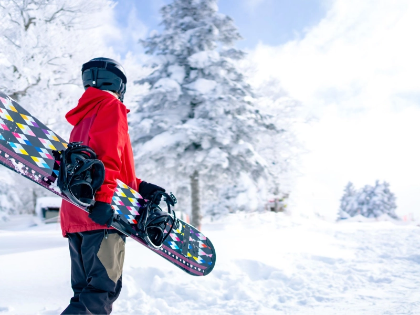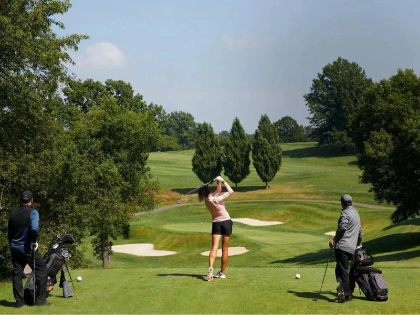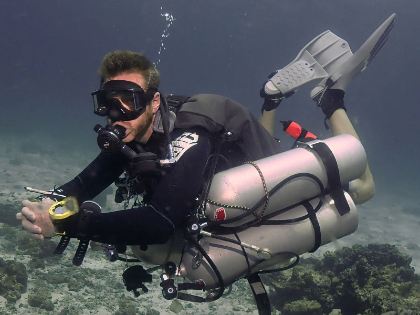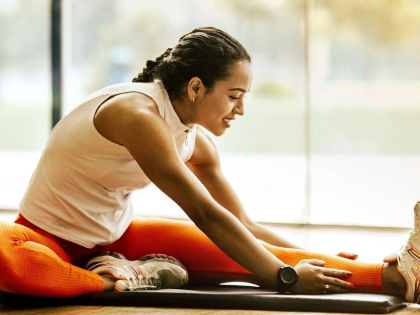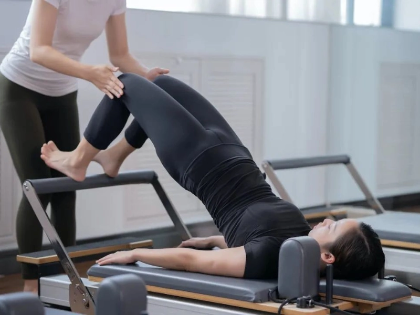MasteringThe Pilates Hundred: A Step-By-Step Guide
Comprising a full-body workout, the Hundred increases core stability and works the abdominal muscles. It works the shoulders, arms, and back as well. The Hundred also promotes good, expansive breathing. Including visual components—such as movies, GIFs, photos and screenshots—into step-by-step instructions will help to improve clarity.
Start Location
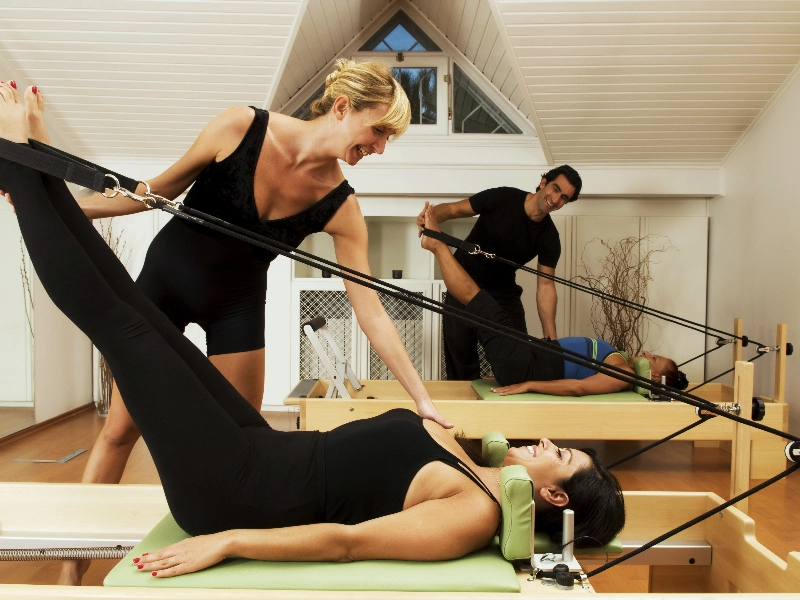
variations
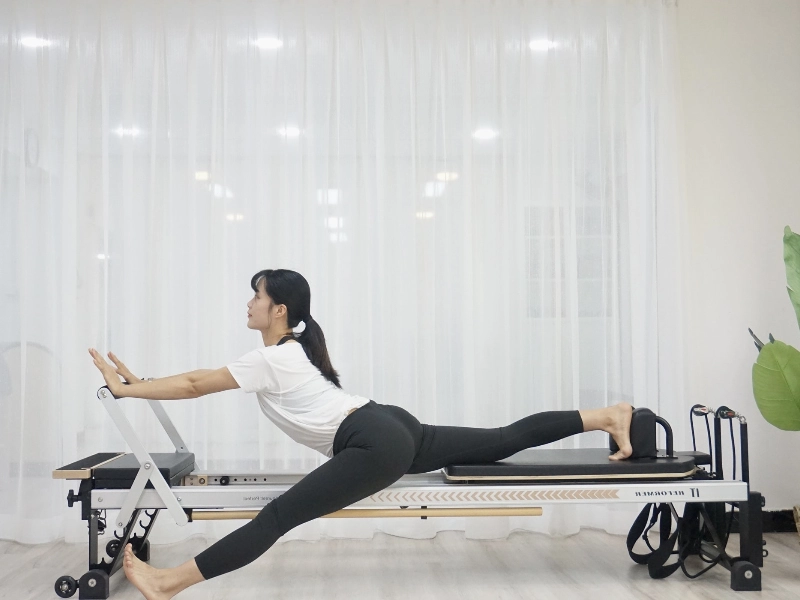 The Hundred is a strong exercise challenging several muscles at once. Along with the scapular muscles supporting the shoulder blades, it works the abdominals, obliques, and back. It also builds the transversus abdominis, which supports the trunk and aids in spine stabilisation.
Lowering your legs to tabletop position and utilising a Pilates ring or ball squeezed between your knees will help you to perform the Hundred without stressing your neck (seen below). This change challenges the core yet helps to relax neck stiffness.
Beginning adjustments let you train at your level instead of immediately diving into an advanced move your body is not ready for. The nature of the movement matters more than the form you produce. Be patient; with time your body will become stronger.
The Hundred is a strong exercise challenging several muscles at once. Along with the scapular muscles supporting the shoulder blades, it works the abdominals, obliques, and back. It also builds the transversus abdominis, which supports the trunk and aids in spine stabilisation.
Lowering your legs to tabletop position and utilising a Pilates ring or ball squeezed between your knees will help you to perform the Hundred without stressing your neck (seen below). This change challenges the core yet helps to relax neck stiffness.
Beginning adjustments let you train at your level instead of immediately diving into an advanced move your body is not ready for. The nature of the movement matters more than the form you produce. Be patient; with time your body will become stronger.
Starting
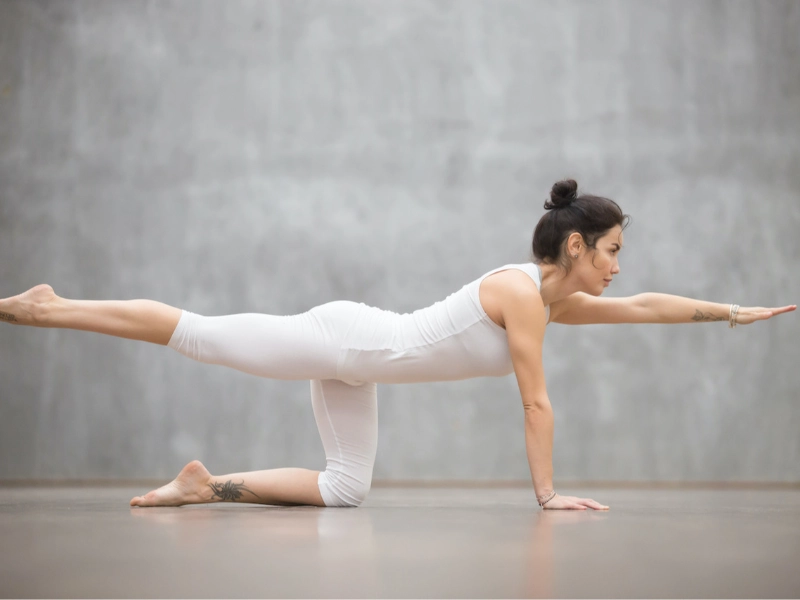 Unlike crunches, the Hundred targets several core muscle groups including oblues and your abdominal muscles—especially the deepest layer of your corset. It also promotes scapular and trunk stabilisation and assists your spine to be strengthened.
It is noteworthy, nonetheless, that some pupils find the Hundred difficult. Working the Hundred into a student's schedule gradually will help them to safely and successfully accomplish it. While pushing too hard runs the danger of injuring the neck or back, steady progress is ideal.
We advise first starting on the mat lying down with your knees bent and feet flat on the surface. Look at your abdomen and lightly scoop the lower ribs in towards the spine. Over time, this will provide the Hundred the stability and encouragement it needs.
Unlike crunches, the Hundred targets several core muscle groups including oblues and your abdominal muscles—especially the deepest layer of your corset. It also promotes scapular and trunk stabilisation and assists your spine to be strengthened.
It is noteworthy, nonetheless, that some pupils find the Hundred difficult. Working the Hundred into a student's schedule gradually will help them to safely and successfully accomplish it. While pushing too hard runs the danger of injuring the neck or back, steady progress is ideal.
We advise first starting on the mat lying down with your knees bent and feet flat on the surface. Look at your abdomen and lightly scoop the lower ribs in towards the spine. Over time, this will provide the Hundred the stability and encouragement it needs.
Midrange
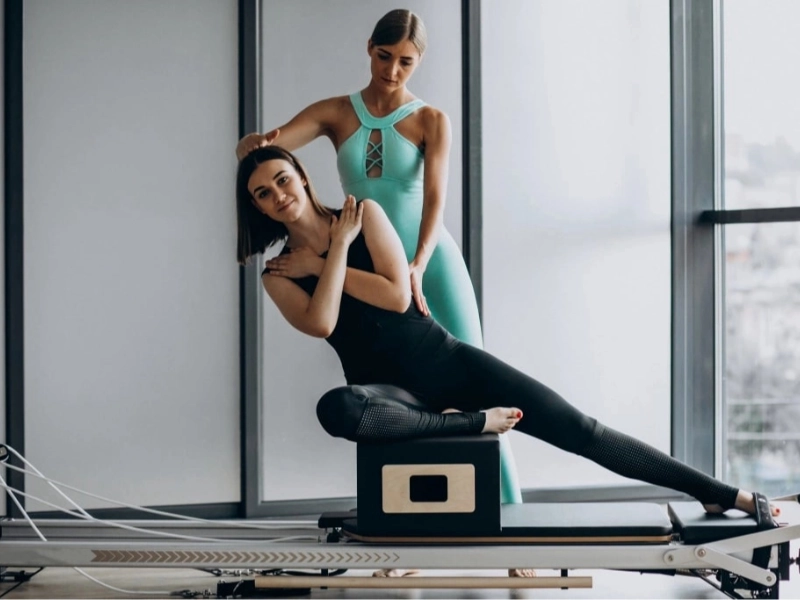 Perfect for developing core strength and stability is the Hundred. It also lets students see their own development as well as the difficulties still to come.
The secret to running the Hundred effectively is making sure the core muscles fire before the arms pump. Like pressing into peanut butter in a quick cadence, the arms should ideally pump up and down isometrically against imagined thick space.
Coordinating the arms with the breath pattern is still another crucial advice. Improving the Hundred's performance, increasing general body awareness, and avoiding damage depend on this as well.
Rushing the movement or sacrificing form for volume is among the most often occurring errors. Recall that it is better to execute few repetitions with great form than many with poor form.
Perfect for developing core strength and stability is the Hundred. It also lets students see their own development as well as the difficulties still to come.
The secret to running the Hundred effectively is making sure the core muscles fire before the arms pump. Like pressing into peanut butter in a quick cadence, the arms should ideally pump up and down isometrically against imagined thick space.
Coordinating the arms with the breath pattern is still another crucial advice. Improving the Hundred's performance, increasing general body awareness, and avoiding damage depend on this as well.
Rushing the movement or sacrificing form for volume is among the most often occurring errors. Recall that it is better to execute few repetitions with great form than many with poor form.
Innovative
 Any Pilates program should include the Hundred since it increases core strength that lessens strain on ligaments, tendons and joints during regular activities. It also helps to correct posture and works on deep abdominal muscles.
Furthermore, arm rhythmic pumping improves lymphatic drainage and boosts circulation, therefore facilitating detoxifying and energising the body. Joseph Pilates underlined the need of deliberate and strong breathing, and this exercise helps build the breathing muscles and improve respiratory capacity.
The Hundred is a difficult drill requiring a lot of core involvement. Beginners should, however, start at a level that fits them comfortably. Should the neck be strained, it should be a warning sign to back off and attempt one of the basic variations.
Any Pilates program should include the Hundred since it increases core strength that lessens strain on ligaments, tendons and joints during regular activities. It also helps to correct posture and works on deep abdominal muscles.
Furthermore, arm rhythmic pumping improves lymphatic drainage and boosts circulation, therefore facilitating detoxifying and energising the body. Joseph Pilates underlined the need of deliberate and strong breathing, and this exercise helps build the breathing muscles and improve respiratory capacity.
The Hundred is a difficult drill requiring a lot of core involvement. Beginners should, however, start at a level that fits them comfortably. Should the neck be strained, it should be a warning sign to back off and attempt one of the basic variations.



